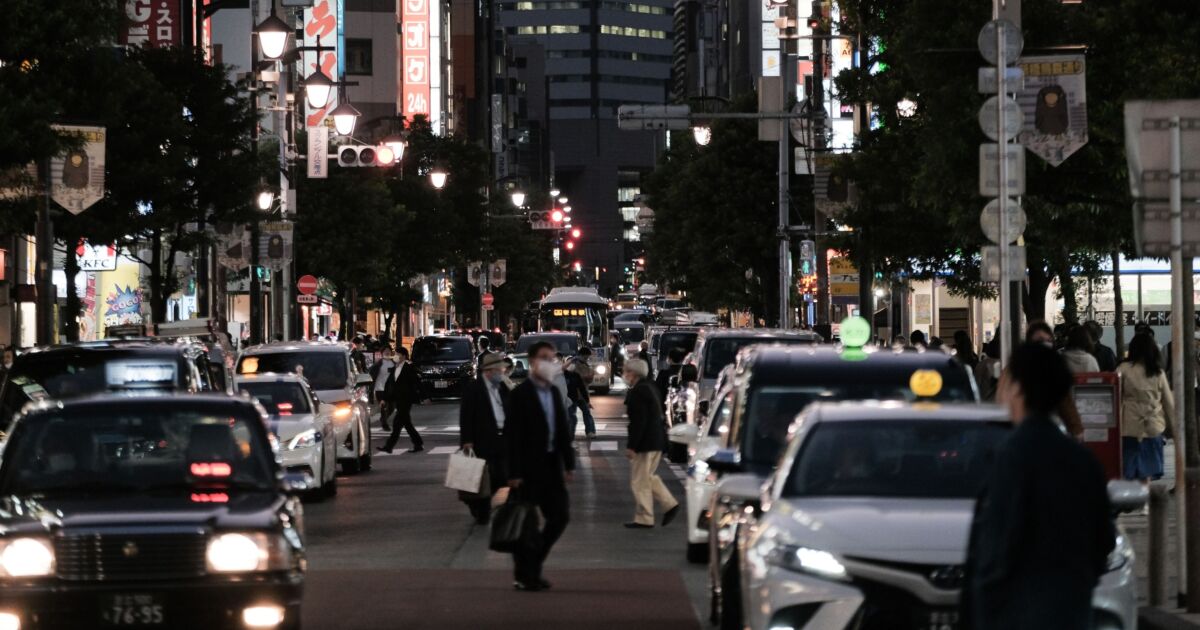Pedestrian crash avoidance tech works but not in the dark, IIHS

Automatic emergency braking systems can detect and prevent pedestrian crashes, but lighting plays a role in the odds no matter if the vehicle has crash avoidance technology, according to a study from the Insurance Institute for Highway Safety.
Crash rates were 27% lower for vehicles that had pedestrian AEB systems, including all severities of pedestrian crashes, according to the research. Jessica Cicchino, IIHS vice president of research and the study’s author, analyzed 1,500 police-reported crashes that included a variety of vehicle models from various manufacturers and compared pedestrian crash rates for identical vehicles with and without pedestrian AEB.
“This is the first real-world study of pedestrian AEB to cover a broad range of manufacturers, and it proves the technology is eliminating crashes,” said Cicchino, in a statement. “Unfortunately, it also shows these systems are much less effective in the dark, where three-quarters of fatal pedestrian crashes happen.”
Pedestrian crash deaths have risen 51% since 2009 and 6,205 pedestrians were killed in 2019, which accounted for about one-fifth of all traffic fatalities that year, according to the study. Injury crash rates were 30% lower when a vehicle has a pedestrian AEB system, which warns drivers when they’re at risk of hitting a pedestrian and applies the brakes, if necessary.
However, when looking at data that includes information about lighting, speed limit and the layout of a crash it’s clear that pedestrian AEB does reduce the odds of a crash in daylight and artificial lighting situations, but in unlit areas there is little difference in the odds of a pedestrian crash for vehicles with or without crash avoidance technology.
“The daylight test has helped drive the adoption of this technology,” said David Aylor, manager of active safety testing at IIHS, in a statement. “But the goal of our ratings is always to address as many real-world injuries and fatalities as possible — and that means we need to test these systems at night.”
The IIHS is working to develop a nighttime test. Recently, IIHS tested small SUVs made by eight different manufacturers in a vehicle-to-pedestrian evaluation in full darkness at the IIHS Vehicle Research Center. All vehicles were tested twice, with high beam headlights on and then with low beam headlights on.
“Some systems worked much better than others in the dark, but there was no single type of technology that got better results,” Aylor said.
The test vehicles included those with a single camera, dual camera, a single camera and radar and radar only. The test vehicles were a 2019 Subaru Forester, 2019 Volvo XC40, 2020 Honda CR-V, 2020 Hyundai Venue, 2021 Chevrolet Trailblazer, 2021 Ford Bronco Sport, 2021 Toyota C-HR and 2022 Volkswagen Taos.
Excluding the radar-only system, which doesn’t depend on light and performed slightly better, performance generally declined for all vehicles at night no matter whether high beams were used or not. The research also didn’t show an association between good headlights and better nighttime scores. Vehicles showed a decline no matter the condition of the headlights when compared to daytime results.
The C-HR performed better than all the others when tested with both good and poor headlights.
“The better-performing systems are too new to be included in our study of real-world crashes,” Aylor said. “This may indicate that some manufacturers are already improving the nighttime performance of their pedestrian AEB systems.”







